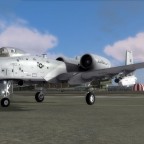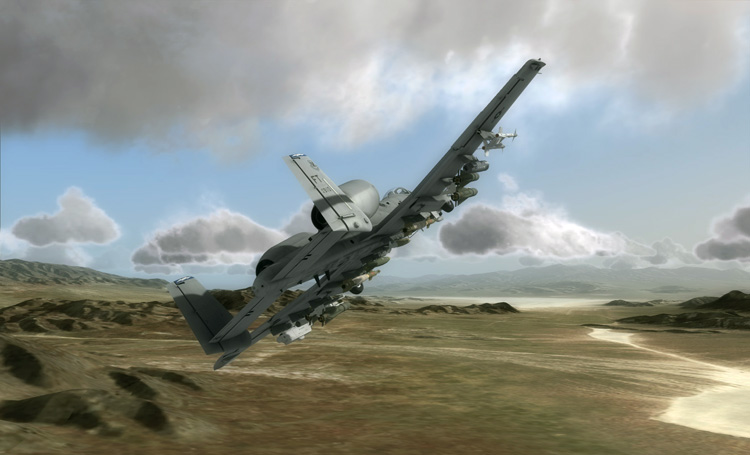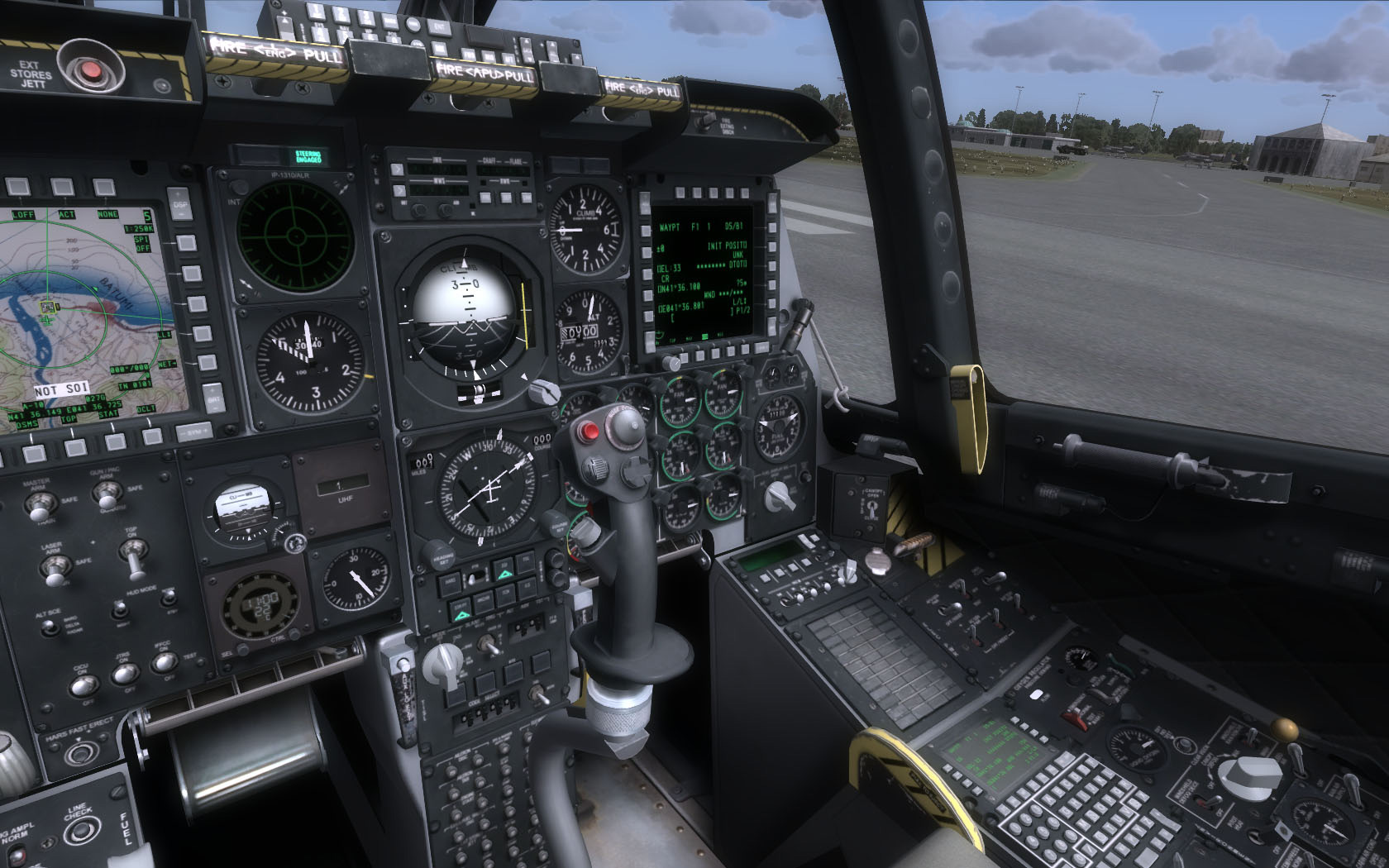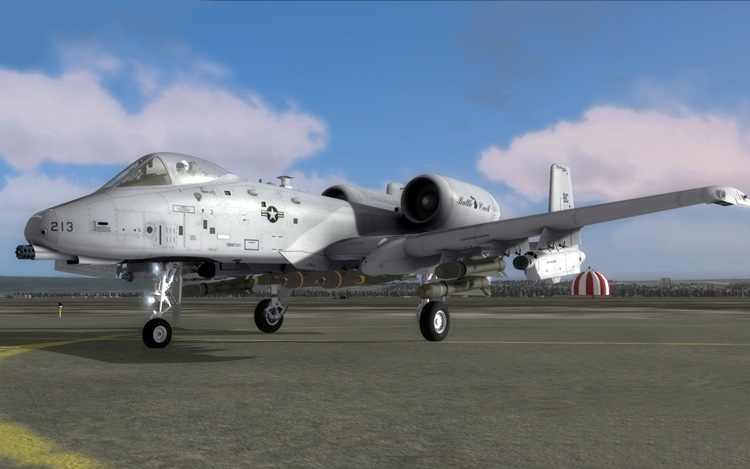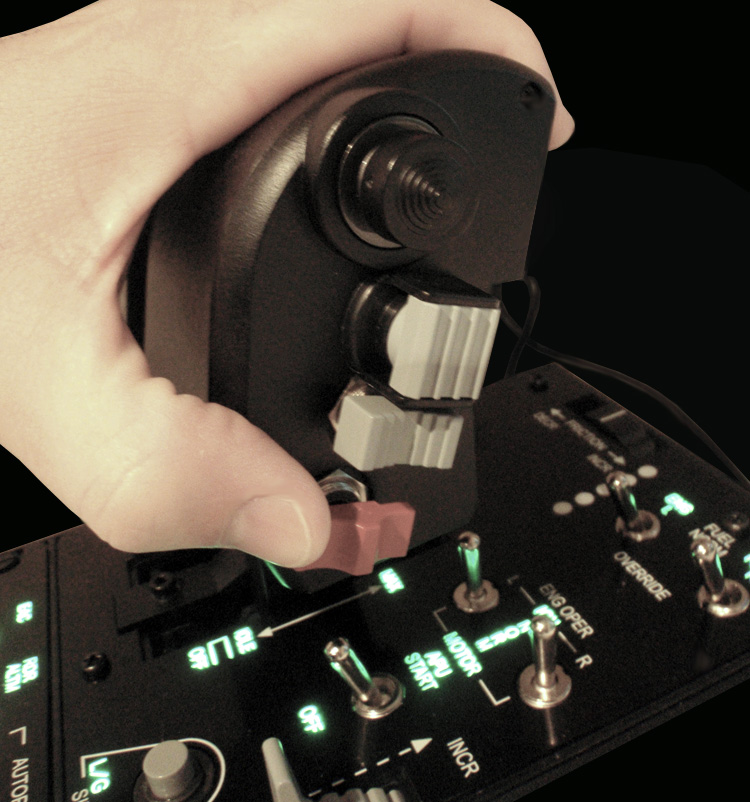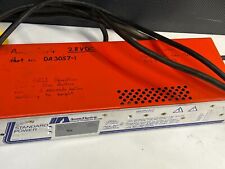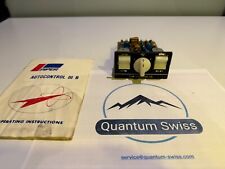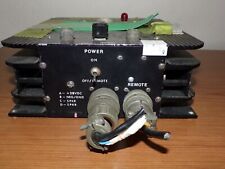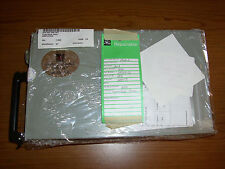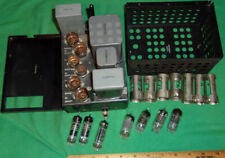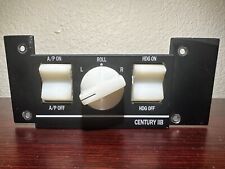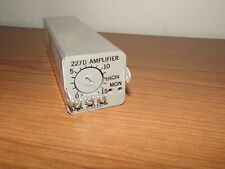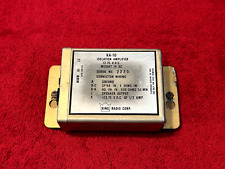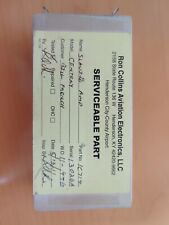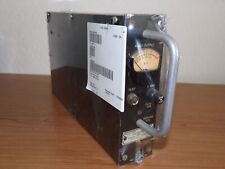Sound
Sound is a critical and often underestimated element of any game, especially an ambitious simulation like DCS: A-10C Warthog. The A-10 has a very unique sound set: the buzz of high-bypass turbofan engines and the brrrap of the GAU-8A cannon are universally recognizable as signs that a Warthog is in the area and DCS: A-10C Warthog captures them quite satisfactorily, in this reviewer’s opinion. In addition to the A-10 noises, the radio crackles with static when the transmitter is far enough away, cockpit switches click, even the seat hums as you adjust position up and down. Fires crackle and explosions boom and the delay caused by distance between the viewer and the sound source is quite believable.
Comms
One of the common items on the Flaming Cliffs 2 and DCS: Black Shark wishlist was more immersive comms. Eagle Dynamics has introduced some new communication features toward that end, and while a welcome improvement, the final result still falls a little short of ideal. You’ll hear more realistic sounding voices over the radio (multiple voices with more than one or two canned phrases to contribute) and more often as the AI is more chatty than the previous installments — in a good way! In addition to your own wingman, you can hear other AI pilots (as long as your radio is tuned to the same frequency, of course), as well as interact with ATC, AWACS, JTAC, even your ground crew.
I’ve never met an AI I really loved, and DCS: A-10C Warthog AI comms are not without their glitches: there are occasional pauses that lead to confusion (“…uh, hello? Am I on the right freq?”) and the ATC AI occasionally gets a kink in it. As an example, after asking for takeoff clearance on a perfectly still airfield, the ATC replied back with “negative”. After waiting forever (it was probably 30 seconds), I decided to taxi into position and hold (excuse me, “line up and wait”, ugh) and as I’m taxiing I get a continuous string of “negative, negative, negative” from the tower. Wishing I had bound the radio volume keys to my HOTAS I pressed with the takeoff and the moment my wheels lifted off the tarmac, the tower comes back, loud and clear, “Hawg 1-1, you are cleared to takeoff.” A real WTF moment.
All in all, immersion has improved, from a comms sense. The additional voices in the air, the crackle of static in distant transmissions, and the number-to-speech performance is much better. Although there are a few comms glitches here and there, Eagle Dynamics has certainly improved over the previous experience, which was almost sterile.
Unlike Lock On and DCS: Black Shark, with the Easy Communication option unchecked, pressing the default communication key (“\” ) does nothing in the game. You have to have properly set your radios AND use the correct mic switch to communicate with the AI. If you don’t know the difference between VHF AM, VHF FM, and UHF (no, not the movie), then you should probably check the “Easy Communication” option. With this setting, all radio commands are accomplished through the communications menu (default key “\”) on-screen menu, regardless of radio settings or mic switch operation.
Avionics
Since DCS: A-10C Warthog attempts to faithfully recreate an advanced weapons platform, I felt this area of the sim could use a little scrutinty. Although DCS: Black Shark set pretty high expectations for immersive clickable 3D cockpits, DCS: A-10C Warthog delivers. Simply put, the A-10C cockpit is exceptionally well modeled. Fans of the A-10A will notice the new MFCD on the left side of the cockpit and the missing armament control panel right away.
Although DCS: Black Shark set pretty high expectations for immersive clickable 3D cockpits, DCS: A-10C Warthog delivers. Simply put, the A-10C cockpit is exceptionally well modeled. Fans of the A-10A will notice the new MFCD on the left side of the cockpit and the missing armament control panel right away.
Other details, like the squared-up eyebrow panels, the updated Up Front Controller (UFC), and other minor changes to the left and right panels take a more discerning eye to notice, but they are there in great detail. Look at this article to see what’s new in the A-10C cockpit).
Nearly every single button, switch, dial, lever, knob, and light is modeled, including the SAS test switches, the fuel tank fill disable buttons, and a number of other “nice-to-have” features that aren’t technically required to fly the Hog, but really add to immersion. Some panels, like the crypto-control or the IFF panel, have switches that still flip back and forth, but don’t have any functional usage… for now!
The depth of the Cockpit Interface Control Unit (CICU) is overwhelming. The Digital Stores Management System (DSMS) enables the pilot to select ripple settings, nose/tail fuzing, and save those customized profiles to call up with a flick of the Data Mangement Switch (DMS) on the HOTAS. TADIL network settings, Maverick sensor slew rates, advanced navigation information, auto-lase parameters, CBU spin RPMs, even MFCD brightness and contrast can be controlled from the correct page. Even the CDU is faithfully modeled down to the built-in test (BIT) screens and operational flight program (OFP) IDs.
Just take a look at the Control Data Unit (CDU) pictured at right. Ain’t she a beaut?
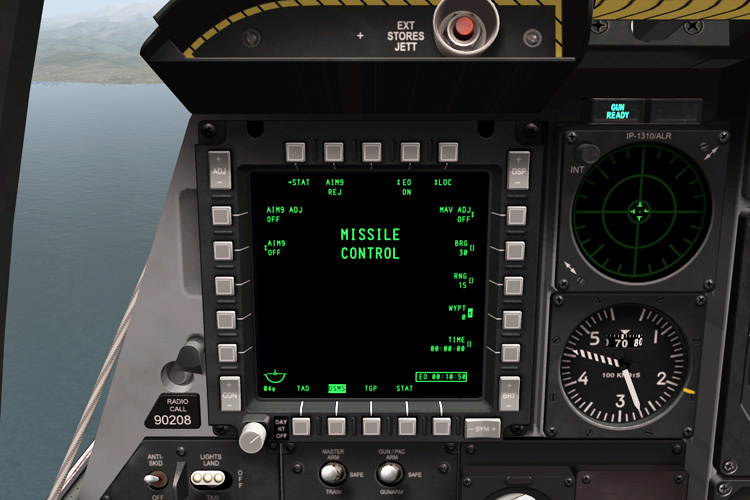
DCS: A-10C Warthog – Cockpit Interface Control Unit (CICU)
Both the IR and CCD Maverick interface models are incredibly accurate. Some virtual pilots may take issue with their crosshairs walking off of a target when the Maverick can’t lock on but this is a real-world challenge as well. Good pilots learn the “ground stabilize” trick with the TMS to help line up tricky shots. On long-range launches, the Maverick pitches up slightly after launch to gain altitude energy while maintaining lock on the target, just like the real thing.
The Litening Pod is also very well modeled. The real world challenge of using a terrain model to place designate points when the pilot is actually trying to designate on top of a tank will play into effect as player bombs seem to always fall 5-10m behind the target. Knowing how the TGP computes designate points, and how the use of targeting geometry and/or the ranging laser plays into all will help astute pilots greatly improve accuracy of their precision guided munitions delivery.

